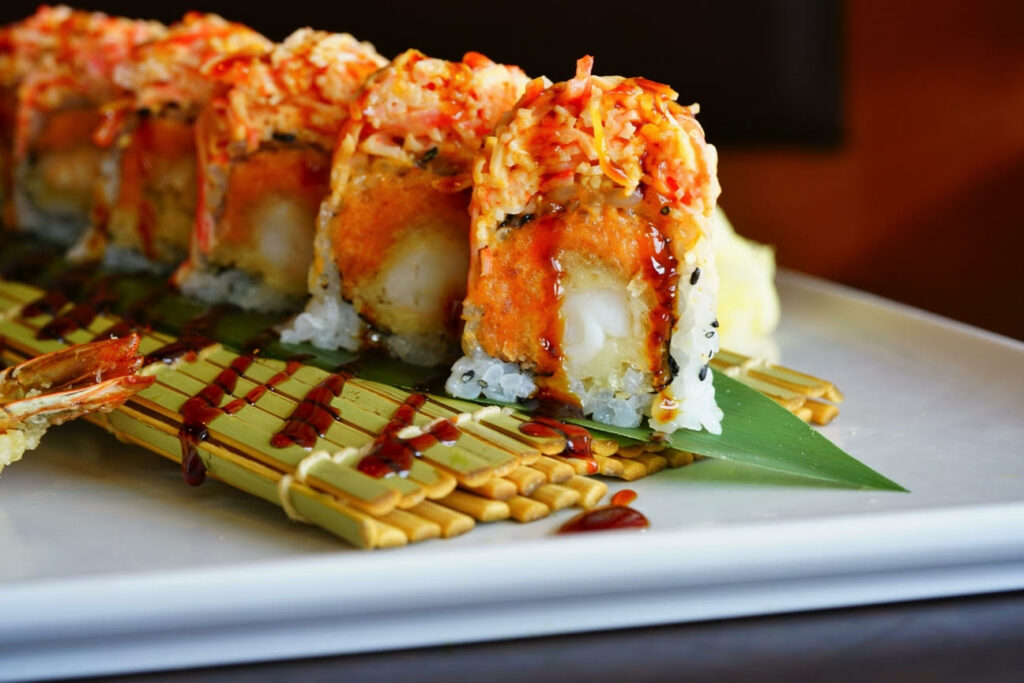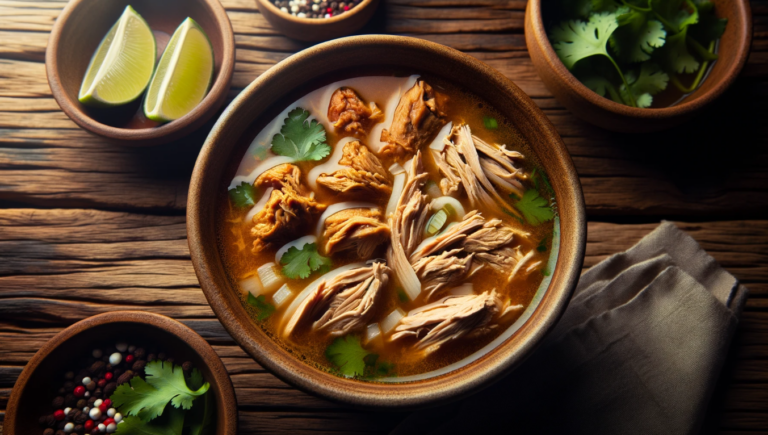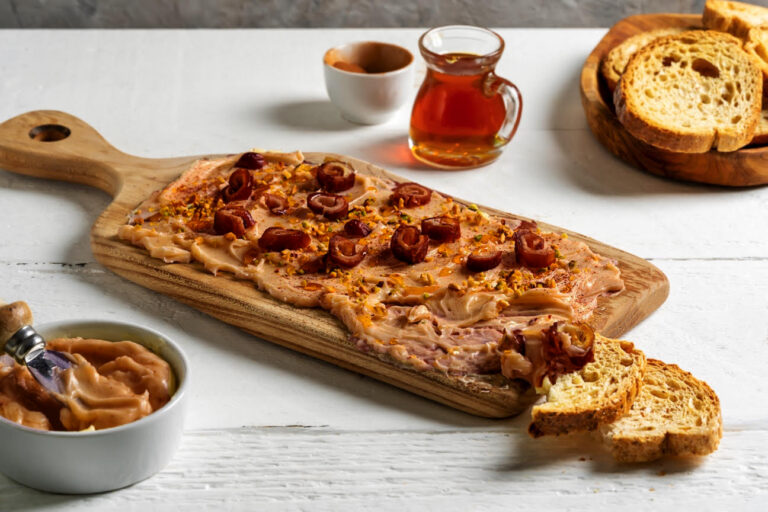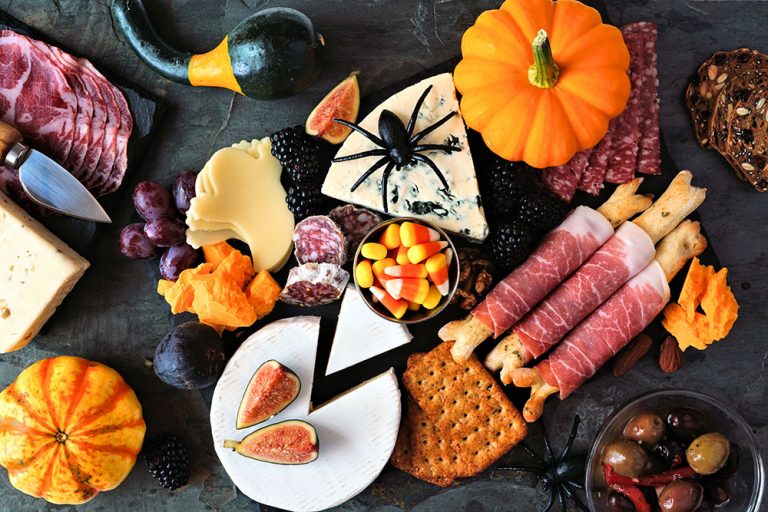
In the realm of culinary craftsmanship, sushi stands as an exquisite tapestry woven from the threads of flavor, texture, and technique. While sushi often conjures images of pristine raw fish atop beds of rice or wrapped flawlessly in bite-sized rolls, a captivating world thrives for those with a penchant for cooked ingredients. From luscious eel to succulent shrimp, cooked sushi showcases an array of flavors destined to enchant seasoned sushi enthusiasts and neophytes alike.
Types of Cooked Sushi
Let us embark on a tantalizing journey through the realm of cooked sushi, where the artistry of Japanese cuisine harmonizes with the richness of cooked ingredients. Cooked sushi can come in any form of sushi from maki (sushi rolls) and temaki (hand rolls/cones) to nigiri (seafood on rice) and oshizushi (pressed sushi). These types of sushi include cooked ingredients but may be served at room temperature or cooler.
Nigiri with Cooked Seafood:
- Unagi Nigiri: Slices of freshwater eel marinated in a soy-based glaze and grilled, served atop rice.
- Anago Nigiri: Saltwater eel, gently cooked and seasoned with tare sauce, atop a bed of rice.
- Tamago Nigiri: Precisely layered and seasoned Japanese omelet on seasoned rice.
- Kani Nigiri: Cooked crabstick elegantly presented on a cushion of rice.
- Hotategai Nigiri: Delicately placed cooked scallops on vinegared rice.
- Ika Nigiri: Cooked squid slices offering a unique texture, placed atop seasoned rice.
- Tako Nigiri: Cooked octopus slices providing a tender bite, served on rice.
- Gyu Nigiri: Thinly sliced and seared beef harmonizing with rice, often accompanied by a sauce.
- Miso-glazed Fish Nigiri: Assorted fish varieties marinated in savory miso glaze, served on rice.
- Hamachi Kama Nigiri: Grilled yellowtail collar yielding tender, flavorful bites presented on rice.
Nigiri with Cooked Vegetables
- Shiitake Nigiri: Grilled shiitake mushrooms thoughtfully placed on seasoned rice.
- Nasu Nigiri: Grilled eggplant slices contributing a smoky essence, positioned on rice.
- Kinoko Nigiri: A selection of assorted cooked mushrooms thoughtfully arranged on seasoned rice.
- Tofu Nigiri: Silken tofu slices delicately resting atop rice, enhanced with soy-based seasoning.
Tempura Rolls:
- Ebi Tempura Roll: A maki roll featuring tempura-fried shrimp, creamy avocado, crisp cucumber, and a touch of spicy mayo.
- Vegetable Tempura Roll: An assortment of tempura-fried vegetables, such as broccoli, mushrooms, and carrots, in a roll.
- Yam Tempura Roll: A roll featuring tempura-fried yam (sweet potato) accompanied by complementary elements.
- Mushroom Tempura Roll: A roll incorporating tempura-fried mushrooms alongside complementary ingredients.
- Tempura Asparagus Roll: A roll showcasing tempura-fried asparagus paired with other components.
Other Cooked Sushi:
- California Roll: A roll highlighting cooked crabmeat, avocado, cucumber, and tobiko.
- Saba Battera: Mackerel prepared in oshizushi style, involving cooking, curing, and pressing with vinegared rice.
- Yakitori Temaki: A nori cone enclosing grilled chicken skewers, fresh vegetables, and teriyaki sauce.
Styles of Warm Cooked Sushi
These styles of cooked sushi strongly reflect the manner in which the sushi is cooked. These types of sushi are generally served hot from the oven or torch.
Baked Sushi Rolls
Baked sushi are sushi rolls that are fully baked. These rolls offer a departure from the more traditional raw fish-centered rolls and showcase a creative fusion of flavors and textures. While the specific ingredients can vary, the concept of baking or using cooked components adds a unique dimension to sushi cuisine.
Aburi Sushi
Additionally, aburi (i.e. “flame-seared”) sushi is a type of nigiri that uses a torch to singe the surface of the fish or seafood. While not fully cooked, this seared sushi does have a distinct seared flavor.
Tradition and Innovation
The allure of cooked sushi lies not only in its tradition but also in its ability to embrace innovation. It bridges the gap between the traditional and the contemporary, offering a mesmerizing culinary experience that caters to diverse palates.
The evolution of sushi from its origins in ancient Japan, particularly during the Edo period, illustrates its rich tradition. As Japan modernized in the Meiji era, sushi adapted to changing ingredients and techniques, leading to the democratization of sushi culture post-World War II. The convergence of tradition and innovation is exemplified by the torching technique, introduced more recently, which enhances sushi’s flavors while respecting its core principles. The balance between honoring heritage and embracing creativity characterizes sushi’s journey, revealing its adaptability and enduring global appeal.
Artistry in Cooked Sushi
Cooked sushi is more than just a dish; it is an orchestrated masterpiece that showcases the synergy of ingredients, skill, and creativity. Each bite is a testament to the culinary artist’s ability to transform ordinary elements into an extraordinary epicurean symphony.
Cooked sushi beckons to all who seek an exploration of flavors beyond the conventional. From the elegance of unagi nigiri to the classic charm of the California roll, this genre of sushi paints a vivid canvas of tastes that resonates with food enthusiasts.











